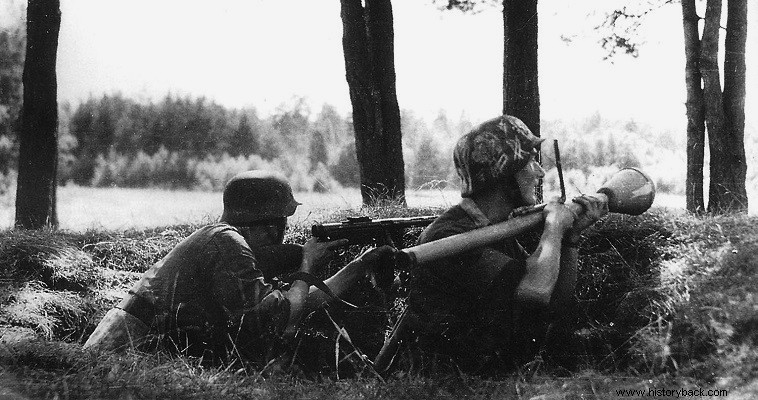
The threat of tanks forced the infantry called to face it, to develop special tactics. The German infantry, initially, due to the lightning successes, in Poland, the West and the Balkans, did not face a serious problem from the action of the opposing tanks. However, he later found himself fighting against the overwhelming numerical superiority of his opponents in tanks, which he had to deal with by the same means.
Successfully countering enemy tanks by infantry was a constant problem during WW2. When the war began, the infantry, at company level and below, had anti-tank (A/T) rifles as their only anti-tank weapon. A/T guns were available at battalion level – two to four per battalion, usually.
In the German Army, the basic A/T gun, at that time, was the 37mm RAK 36. In 1940, the German infantry had, in some cases, to face the Allied tanks, as in Ou, during the splitting of the Meuse, in the counter-attacks of the 4th French Armored Division of de Gaulle or in Arras against the British.
The problem became even more acute when the Germans invaded the Soviet Union . The Soviets fielded huge numbers of tanks, including the excellent T-34, but also the heavy KV-1 and KV-2. Against these tanks, no German weapon was successful, except the famous 88s.
The need to deal with these tanks by the German infantry was the generative reason for the formation of the special groups of infantry tank hunters. The idea was not new. During World War I, when the Allies deployed hundreds of tanks, the Germans were forced to train their infantry to deal with them, with whatever means and weapons were available.
The German infantry of the 1st Infantry Division faced the opposing tanks with grenades, with the first A/T rifles that were put into service, with light field guns in the role of anti-tanks, but also with stones and wood, which they tried to wedge in the crawlers.
Organization
Dealing with tanks was a particularly dangerous mission. This was also demonstrated in the Spanish Civil War, where the infamous "Molotov bomb" was "born". , but also in the Winter War in Finland, in 1939-40. The Finns proved to be particularly successful Soviet tank hunters , although their hunting parties suffered losses of around 70% of their personnel.
The German tank hunter groups consisted of seven men. Usually this mission was undertaken by one battle group per company. Initially the team had three A/T rifles – three elements, with a gunner and loader and a chief NCO.
This group was under the command of a non-commissioned officer of known courage and administrative ability and was trained in the special weapons that their mission required. However, all German infantry were trained, to some extent, in anti-tank tactics.
Anti-tank tactics and weapons
Countering tanks is possible with passive and active countermeasures. The former included A/T obstacles, trenches and minefields. The latter included A/T weapons of all kinds, mainly guns and A/T small arms. Initially the Germans had, at company level, A/T rifles.
A/T rifles had, anyway, limited piercing capability. The German A/T rifles were the Panzerbushe 38 and Panzerbushe 39, both of 7.92mm caliber. Both guns fired chest-piercing rounds, but were effective at ranges of less than 100m. and could only face lightly armored tanks. Later the Panzerbushe 39 gained the ability to fire anti-tank grenades. Solothurn S-18/1000 (Panzerabwehrbüchse 785) of 20mm were also available.
In 1940, the GG/P40 anti-tank gun was put into service. , caliber 30mm, which was fired, with the addition of a simple quorum, by the Mauser 98k rifles of the German infantry. But it was not particularly effective and in 1942 it was replaced by an improved one, of 40 mm caliber, which could penetrate 50 mm thick armor at a distance of up to 150 m.
About 24 million examples of these grenades were produced throughout the war. In late 1942, the improved 46mm anti-tank gun entered service, which could penetrate 70-90mm of armor, depending on its angle, at a distance of 80-100m.
At the end of 1943 this was replaced by the 61mm anti-tank gun, which could penetrate armor up to 120mm thick at a distance of up to 100m.
If the opposing tanks passed through the barrage of German anti-tank guns, the task of neutralizing them was now undertaken by groups of brave infantrymen, who approached them, taking advantage of their weaknesses, i.e. the poor visibility of the crew, the fact that due to the internal noises, the crew of the tank, has no real, acoustic, contact with the outside of its steel casing, world and the limited mobility of the tank, in certain types of terrain.
These men were ambushed in suitable positions and when the opposing tanks approached they rushed at them from blind spots for the tank's guns and either attached magnetic or common mines, or later hollow-fill explosives or threw bunches of grenades and "Molotov cocktails" on them. , on engine covers and exhausts.
Grenade beams were effective as the engine cowling armor was not heavy and could be penetrated by the explosion to destroy the engine and neutralize the tank. Usually the grenade pack consisted of seven M24, or later PH39, grenades. Their ignition time was 4.5 seconds.
The Germans, having first encountered, then copied the American Bazooka, creating the Panzerschreck ("terror of tanks"), officially known as the Raketenpanzerbuchse 43. This weapon was 1,638 m long and weighed 9.5 kg. It put an 88mm caliber rocket. It was effective at distances below 150m
In 1944 the improved Raketenpanzerbuchse 54 entered service, which was soon replaced by the improved Raketenpanzerbuchse 54/1, which had a longer range. By the end of the war, more than 290,000 weapons of the type and three models were produced. This weapon also equipped the anti-tank companies of the infantry regiments of the Infantry Divisions of the 1944 model.
The most famous, however, German portable A/T launcher was none other than the famous Panzerfaust (=A/T fist), which entered service from the summer of 1943. The original (Panzerfaust Klein) put a hollow filling projectile, caliber 100mm. But it had an effective range of only 30m. It could penetrate 140mm thick armor.
The Panzerfaust 30 Gross it had the same effective range, but fired a 150mm hollow-fill projectile, which could penetrate 200mm armor. In other words, he was able to destroy every chariot of the time.
In the summer of 1944, the Panzerfaust 60 entered service and in September 1944 the Panzerfaust 100 appeared . Even more advanced prototypes of the Panzerfaust were designed but could not be used due to the end of the war. In total more than 8 million weapons of the type were produced. From 1944 each infantry and engineer company was equipped with 36 such weapons.
German infantry tank hunters also had the Haftohlladung hollow charge anti-tank bomb. This explosive device, shaped like a funnel, had three powerful magnets at its base so that it could stick to enemy tanks. The soldier would approach the enemy tank, stick the bomb on it, arm it and rush to cover, as, in the first models, 4.5 seconds later, the explosion followed.
In later prototypes the ignition time was increased to 7.5 seconds, to allow the soldier placing the bomb sufficient time to escape. This weapon entered service from November 1942. It was particularly effective, both against enemy tanks, but also against buildings and fortifications. It could penetrate 140mm of steel, or 0.5m. concrete.
However, it was dangerous to use, as it required, quite literally, the user's "personal" contact with the target. This weapon was often used by German hunting groups. By the end of the war, 553,900 explosive charges of this type were manufactured.
Another weapon of the clustered anti-tank fight was the "flying mine" Panzerwurfmine I. In reality it was a weapon between a mine and a hollow charge grenade, which was thrown by hand, at short distances. It was fitted with a kind of cloth wings.
It armed automatically, when thrown and the wings opened, forming a kind of small parachute, with the help of which the ammunition "landed" on the enemy tank and exploded. Its hollow charge could penetrate 80mm of armour. Various types of A/T mines were also extensively used, with the most basic example being the Teller.
The education – moral factor
Tackling tanks from the infantry was a particularly difficult and dangerous task, which required the maximum of the soldier's physical and mental powers. The charioteer men had to have nervous systems of steel to withstand the pressure they were under at the moment of battle, as they knew that only a moment separated life from death.
The German infantry opponents of the tanks owed their success to the painstaking but extremely realistic training they underwent, since, until about 1942, the weapons at their disposal were not those which would enable them, with relative safety, to face the armored threat, nor did they guarantee success.
The introduction of portable anti-tank launchers into the German arsenal opened a new page in the history of tank hunters. Now the humble pedestrian had the means to destroy a steel behemoth. It was a revolution in martial art, analogous to the use of the arquebus against heavily armored knights in the early Renaissance.
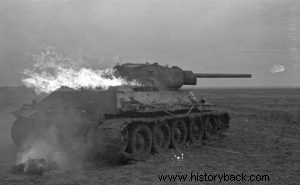
Soviet T-34 tank on fire.
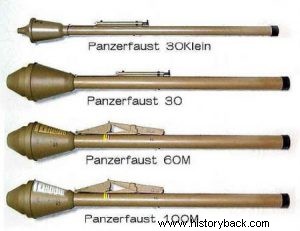
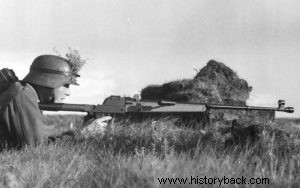
German soldier with an anti-tank rifle.
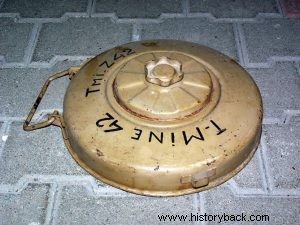
Mine Teller.
